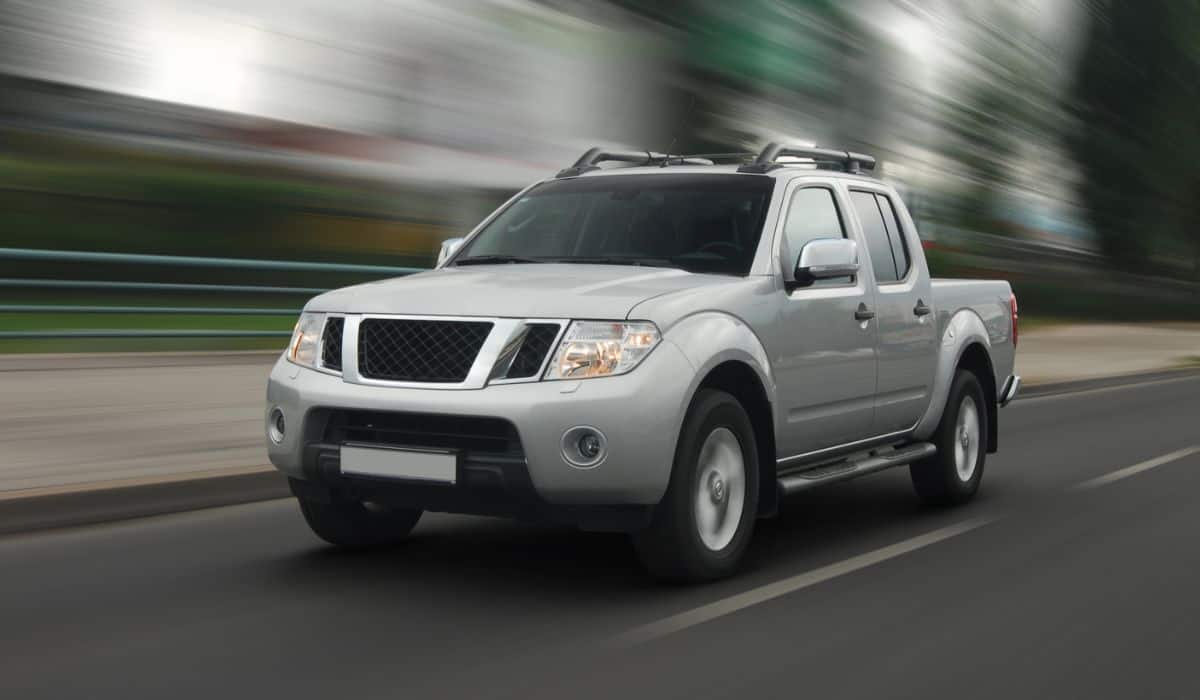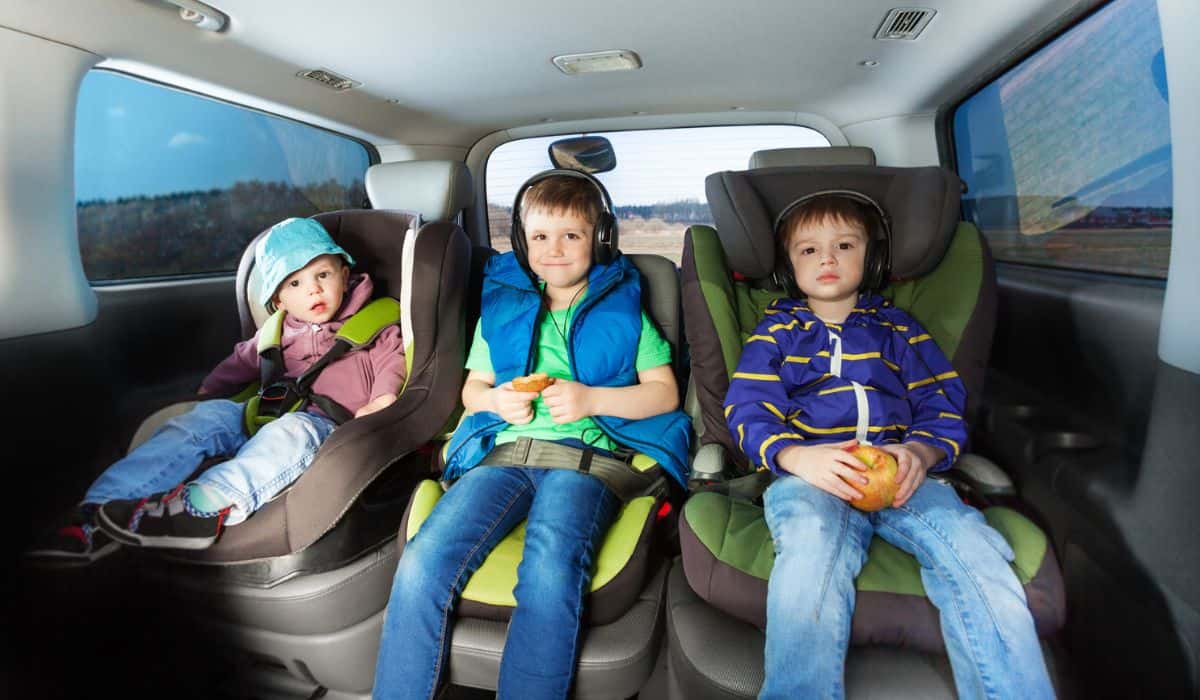Are Pickup Trucks Safe For Babies? Safety Features To Consider
Pickup trucks are widespread across America, and owners use them for a range of purposes, including to commute to work, haul materials, and traverse the backcountry. But are these vehicles safe for babies and young children?
Unfortunately, pickup trucks are less safe for babies and children than other vehicles. Studies show that children riding in extended cab pickup trucks are at higher risk of injury than in other vehicles. Many models don’t include a proper back seat, LATCH systems, or shoulder and lap belts.
There’s a lot to consider when looking for a family-friendly vehicle, and although they’re practical, a pickup truck might not be the best option. Let’s take a closer look at why you might want to think twice about putting your children in the back of a pickup truck.
Can a Baby Safely Ride in a Pickup Truck?

Traveling with a baby in a pickup truck isn’t recommended, as it can be less safe than other options. Many pickup trucks aren’t equipped with essential safety features like a proper backseat, latch, or lap and shoulder belts.
Furthermore, studies have shown that children riding in extended cab pickup trucks are at higher risk of injury than in other vehicles, regardless of whether they’re in the front or back seat.
What Are the Risks of Young Children Riding in Pickup Trucks?
There are several risks young children face when riding in pickup trucks. Young children need correctly fitted and secured seats based on their size, age, and weight. Pickup trucks don’t always support these seats, and research suggests trucks are less safe than other options.
Let’s take a deeper look at some of the risks young children face when traveling in pickup trucks.
Children Have a Higher Risk of Injury
A 2002 study showed that children have a higher risk of injury in extended-cab trucks than in other vehicles.
The study looked at injuries reported for over 1,300 children and various crashes from cars, vans, sports vehicles, and pickup trucks. The study suggests the risk of injury is higher in pickup trucks, regardless of whether the kids are riding in the front or back.
That said, children in rear seats have a substantially higher risk of injury than children in the back seats of other cars. The study also noted the child’s age, type of restrain, point of impact, vehicle weight, and the accident’s severity.
Many Pickup Trucks Don’t Have a Proper Back Seat
The National Highway Traffic Safety Administration (NHTSA) advises all children below 13 rides in the back seat, ideally in the middle seat. However, many pickup trucks don’t include a proper back seat — and they therefore lack the proper space for a child.
The Pickup Truck Bed Isn’t Safe
Many drivers travel with children in the bed of the pickup truck. Some owner’s even secure seats to the bed of their pickup truck. Unfortunately, this area isn’t safe at all and can increase the risk of injury for children and adults.
Pickup Trucks Might Not Have LATCH
Several pickup truck models don’t include LATCH systems, which is an attachment for car seats. The system comprises anchors and a top tether for additional safety. Without the feature, you’ll need to use the seatbelt, which doesn’t provide the best restraint.
Trucks Might Not Have Lap or Shoulder Belts
Many pickup truck models don’t include lap and shoulder belts in the backseats. This design can make the vehicle unsafe for older kids in booster seats that require lap and shoulder belts.
Can You Put a Rear-Facing Car Seat in a Pickup Truck?
Children are required to ride in rear-facing seats until they’re two years old, based on their weight and height. These seats require a proper back seat to be fitted securely. So, can you place a rear-facing car seat in a pickup truck?
It’s possible to legally place a rear-facing car seat in the passenger seat of a pickup truck if you don’t have a proper back seat. That said, you MUST disable the front passenger airbag.
For extended cab pickup trucks, you can legally install a rear, forward-facing, or booster seat if over 80% of the chair fits on the vehicle’s existing seat.
Note: These specifications may vary depending on your vehicle model and location. Be sure to check with your local department of motor vehicles or jurisdiction for the most accurate information.
What Are the Safest Cars for Babies and Young Children?

So, if pickup trucks aren’t suited for babies and young children, which cars are?
The easiest way to determine a car’s safety is to use the ratings from the Insurance Institute for Highway Safety (IIHS). The IIHS rates cars on several criteria, including crash tests from different angles to test durability, head restraints, airbags, and more.
Let’s look at some of the highest-rated IIHS vehicles from 2022 to help you find a safe family vehicle.
2022 Honda Civic
The 2022 Honda Civic is a four-door sedan awarded a Top Safety Pick + by the IIHS. The model has two rear seats with compatible LATCH hardware. There’s an additional seat with a tether anchor that allows you to use lower anchors from the other seats.
The 2022 Honda Civic performed well across all tests, including the front and side crash simulations. You can click here to read about it’s best years.
2022 Honda Insight
Another Top Safety Pick + from Honda is the 2022 Honda Insight. The vehicle performed well across several tests and included similar LATCH hardware to the model mentioned above. Overall, Honda seems to be a safer option for family vehicles.
2022 Subaru Crosstrek Hybrid
As far as small SUVs go, the 2022 Subaru Crosstrek Hybrid is a fantastic option. It offers two rear seats with LATCH hardware alongside an additional seat with a tether anchor. The Crosstrek Hybrid was awarded the Top Safety Pick + by the IIHS and performed very well across all metrics.
2022 Honda Odyssey
One minivan to consider is the 2022 Honda Odyssey. It includes four rear seats with compatible child seat attachment LATCH systems. The Odyssey also has one additional seat with a tether anchor. This model might be better suited for larger families with several young children.
